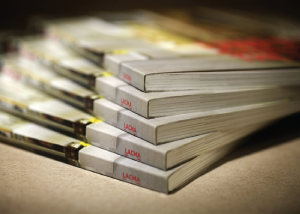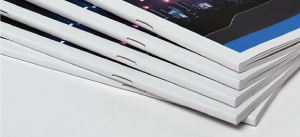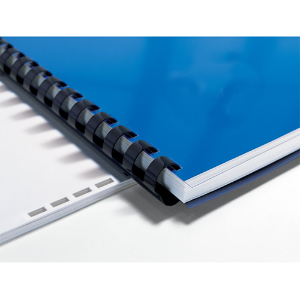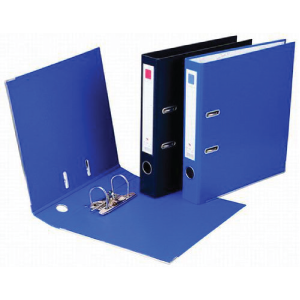
Finishing
Quality Finishing for Your Print Requirements
After your print job has been meticulously designed and the appropriate paper stock selected, the next crucial step is the finishing process. Finishing adds the final touches that transform your printed materials into polished, professional products. This step is essential for enhancing functionality and ensuring that your print items meet your specific needs.
What Does Finishing Involve?
Finishing can encompass a variety of techniques tailored to the intended use of your printed materials. Here are some common finishing processes:
-
Hole Punching: Essential for documents intended for ring binders or clip presentations. This ensures your materials are organized and easily accessible.
-
Perforation: Ideal for flyers that include tear-off coupons. This technique allows customers to easily remove a section of the flyer for redemption, enhancing engagement with your brand.
-
Folding: For brochures printed on A4 paper that need to be folded to DLE size, precise folding techniques ensure clean lines and professional presentation.
Our Finishing Services Include:
-
✅ Flyers: Enhance your promotional materials with options for perforation, folding, and custom shapes to maximize impact.
-
✅ Brochures: Choose from various folding styles (e.g., tri-fold, bi-fold) and binding techniques that best suit your content and design.
-
✅ Manuals: We offer professional binding options such as spiral binding, perfect binding, or comb binding to create user-friendly training manuals.
-
✅ Coupons: Utilize perforation for easy tear-off and redemption, driving customer interaction and response.
-
✅ Die-Cut Shelf Wobblers: Create eye-catching shelf wobblers with custom shapes and designs to grab attention at the point of sale.
The Importance of Quality Finishing
Each of these finishing techniques is critical in creating the final product, whether it’s a training manual, point-of-sale flyer, or company brochure. Quality finishing not only enhances the aesthetic appeal of your printed materials but also improves functionality, ensuring that your audience can easily engage with your content.
Let Us Elevate Your Print Project!
At Copy Direct, we understand that the finishing touches can make all the difference. Our experienced team is here to help you select the best finishing techniques for your print requirements, ensuring that every piece reflects your brand’s professionalism and attention to detail. Contact us today to discuss how we can help you achieve outstanding results with your print projects!
 |
 |
 |
Get the binding style that suits you best. Which one is right for you?
The following outlines several different styles of binding for you to consider and choose from.
You will see the following details on each style of finishing to help you choose what is best for the end user application of your catalogue.
Perfect Binding
What is Perfect Binding?
Perfect binding is a popular bookbinding method that combines functionality with a professional appearance. This technique involves gathering stacked pages, known as the book block, which are then carefully assembled into a book. The edges of the spine are either ground down or notched to create an optimal surface for adhesion.
The Perfect Binding Process
-
Gathering and Notching: The pages are gathered into a block, and the spine edges are notched or ground off to enhance the glue’s adherence.
-
Gluing: A strong adhesive is applied to the spine, allowing the glue to flow into the notches or ground areas. This increased surface area results in a more durable and long-lasting bond between the pages and the spine.
-
Trimming: Finally, both the covers and the book block are trimmed flush for a clean, professional finish.
Key Features of Perfect Bound Books
-
Professional Appearance: Perfect-bound books offer a sleek and polished look, similar to paperback books, making them an excellent choice for various applications, from novels and catalogs to reports and manuals.
-
Capacity: This binding method can accommodate a substantial page count of up to 640 pages (or 340 leaves of 80gsm paper), allowing for comprehensive content without compromising quality.
-
Printed Spine: One of the significant advantages of perfect binding is the ability to print information on the spine, such as the title, author, or branding. This feature enhances visibility on shelves and improves the overall aesthetic of the book.
When to Choose Perfect Binding
Perfect binding is ideal for projects that require a professional look and feel, such as:
- Trade Books: Novels, textbooks, and reference materials that benefit from a polished presentation.
- Magazines: Suitable for thicker magazine formats that require durability and style.
- Reports and Manuals: Great for company reports, training manuals, or any document that needs to convey professionalism.
Elevate Your Printed Materials
At Copy Direct, we specialize in perfect binding to ensure your books not only look great but also stand the test of time. Whether you’re producing a limited run or a large batch, our team is here to assist you every step of the way. Contact us today to discuss your project and discover how perfect binding can elevate your printed materials!
What Does A Perfect Bound Book Look Like - click here to view on YouTube.
Saddle Stitch Binding
A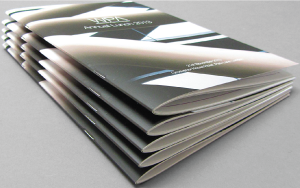 n Economical Solution for Booklets and Catalogues
n Economical Solution for Booklets and Catalogues
Saddle stitch binding is a popular and cost-effective method for creating booklets, catalogues, and other printed materials. This technique is ideal for documents ranging from 8 to 100 pages, making it a versatile choice for a variety of applications.
How Saddle Stitch Binding Works
-
Folding and Stapling: The pages are folded in half and stacked together. Two staples are inserted along the spine to secure the pages, creating a neat and organized booklet.
-
Custom Sizes: While the standard finished sizes are typically A4 or A5 when closed, we also offer custom sizes to fit your specific needs.
Material Options
-
Cover Weight: Saddle-stitched booklets usually feature a heavier weight cover, typically between 200-300gsm, ensuring durability and a professional appearance.
-
Content Pages: The internal pages can range from 80-150gsm, providing flexibility in paper weight to suit different designs and purposes. In some cases, a uniform weight throughout the booklet can also be chosen.
Advantages of Saddle Stitch Binding
-
Cost-Effective: Saddle stitch is one of the most economical binding methods available, making it an excellent option for budget-conscious projects without sacrificing quality.
-
Professional Look: This binding style gives your booklets a polished and professional appearance, suitable for marketing materials, product catalogues, and more.
-
Easy to Handle: The lightweight and compact nature of saddle-stitched booklets makes them easy to distribute and store.
Ideal Applications for Saddle Stitch Binding
Saddle stitch binding is particularly well-suited for:
-
Catalogues: Showcase products effectively with an organized layout that’s easy for customers to navigate.
-
Booklets: Perfect for informational booklets, manuals, or guides that require a straightforward and accessible format.
-
Newsletters: Create engaging newsletters that inform and connect with your audience without excessive costs.
-
Event Programs: Great for programs or agendas for events, conferences, and gatherings, allowing for quick reference during the occasion.
Get Started with Saddle Stitch Binding Today!
At Copy Direct, we specialize in high-quality saddle stitch binding that meets your specific needs. Whether you’re producing a catalogue, booklet, or newsletter, our team is here to help you create a professional product that stands out. Contact us today to explore your options and bring your vision to life!
Square Fold Saddle Stitched Binding
Square fold saddle stitched binding offers a sleek, modern look for full-color books. Featuring creased cover sheets and precise face trimming, these booklets have a crisp, square spine and can be opened flat for easy handling, stacking, and storage.
Key Benefits:
- Flat Opening: Easy to read and navigate.
- Professional Appearance: Ideal for marketing materials, catalogs, and reports.
- Durable Construction: Withstands frequent use while maintaining quality.
Elevate your printed materials with this stylish and functional binding option. Contact us today to learn more!
Plastic Spiral Binding
Ideal for Technical Manuals and Multi-Page Documents
Plastic spiral binding is a versatile and practical binding method, especially suited for technical manuals and documents that require a substantial page count and the ability to lie flat. This binding technique ensures easy accessibility and durability, making it a popular choice for various applications.
How Plastic Spiral Binding Works
-
Punching: The pages are punched with a series of holes along the binding edge, allowing for seamless integration with the plastic spiral.
-
Inserting the Comb: A plastic comb (or spiral) is threaded through the punched holes, securing the pages together.
-
Flexibility: This binding method allows for easy addition or removal of pages as needed, providing flexibility for dynamic documents.
Capacity and Features
-
Page Count:
- Circle Ring: Accommodates up to 500 pages (250 leaves) of standard paper.
- Oval Ring: Supports up to 900 pages (450 leaves), making it ideal for extensive technical documents or reports.
-
Wide Range of Colors: Plastic spiral bindings come in a variety of colors, allowing you to customize the appearance of your document to match your branding or personal preference.
Benefits of Plastic Spiral Binding
- Lies Flat: Documents bound with plastic spirals open flat on a surface, making it easier for users to read and write on the pages.
- Durable and Lightweight: Plastic spirals are sturdy yet lightweight, ensuring longevity while remaining easy to handle.
- Professional Appearance: Provides a clean, organized look that is suitable for both technical and creative documents.
Perfect Applications for Plastic Spiral Binding
Plastic spiral binding is particularly well-suited for:
- Technical Manuals: Ideal for user guides, technical specifications, and instructional materials that require frequent reference.
- Reports: Perfect for business reports and presentations where multiple pages need to be easily navigated.
- Training Materials: Great for training manuals that may require updates, allowing for pages to be added or removed easily.
- Presentations: Provides a professional finish for pitch decks and proposal documents.
Get Started with Plastic Spiral Binding Today!
At Copy Direct, we offer high-quality plastic spiral binding solutions tailored to your specific needs. Whether you’re working on a technical manual, report, or any multi-page document, our team is here to help you achieve a polished and functional final product. Contact us today to learn more about our binding options and elevate your printed materials!
Wire Binding
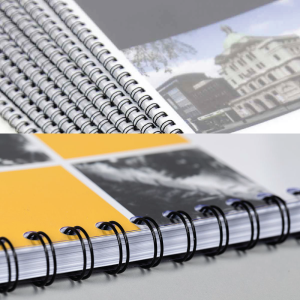
Wire Bound Catalogues
Versatile and Popular Binding Solution
Wire binding, known by various names such as twin loop wire, Wire-O, double loop wire, double-O, ring wire, and wirebind, is one of the most favored commercial binding methods for catalogues and documents. This technique allows for a professional finish while providing excellent functionality for users.
How Wire Binding Works
The wire binding process involves the following steps:
-
Punched Pages: Pages are pre-punched with holes that align with the wire binding.
-
C-Shaped Spine: The punched pages are threaded onto a "C" shaped wire spine.
-
Closing the Spine: A wire closer compresses the spine into a round shape, securing the pages in place.
This method allows documents to open completely flat on a desk and enables 360-degree rotation of the bound pages, making it ideal for catalogues and reference materials.
Common Hole Patterns
Wire binding utilizes two primary hole patterns, each with specific sizes and applications:
3:1 Pitch (3 Holes per 25mm)
- Capacity: Up to 120 leaves (240 pages) of 80gsm paper.
- Best Suited For: This pattern is most commonly used for binding smaller-sized documents.
- Spine Sizes: Available in diameters ranging from 4.8mm to 14mm. Note that sizes larger than 14mm are not available due to the hole size constraints.
2:1 Pitch (2 Holes per Inch)
- Capacity: Up to 240 leaves (480 pages) of 80gsm paper.
- Best Suited For: While primarily used for larger-sized documents, this pattern can also accommodate smaller diameter books.
- Spine Sizes: Commonly available in sizes ranging from 15.9mm to 32mm. We also offer special small-sized 2:1 pitch wire for documents as small as 6.4mm.
Benefits of Wire Binding
- Durability: Wire-bound documents are strong and can withstand frequent handling.
- Professional Appearance: Provides a clean, modern look suitable for presentations and catalogues.
- Flexibility: Documents lie flat when opened, enhancing readability and usability.
- Variety of Sizes: Offers multiple options for thickness and capacity, catering to diverse project needs.
Ideal Applications for Wire Binding
Wire binding is perfect for various projects, including:
- Catalogues: Showcase products effectively with a durable, professional finish.
- Reports and Proposals: Present information clearly and attractively for business settings.
- Instruction Manuals: Provide user-friendly access to instructions and information.
- Course Materials: Great for educational settings, allowing easy reference and rotation.
Get Started with Wire Binding Today!
At Copy Direct, we specialize in high-quality wire binding solutions tailored to your specific needs. Whether you're producing catalogues, reports, or manuals, our team is here to assist you through the entire process. Contact us today to explore your options and elevate your printed materials with professional wire binding!
What Does A Wire Bound Book Look Like - click here to view on YouTube.
Ring Binder Catalogues
Ring binder catalogues are an excellent choice for operational manuals or any documents that require regular updates. With this binding method, pages can be effortlessly removed and replaced, ensuring that your materials stay current and relevant.
We offer a variety of options, including 2, 3, or 4-ring binders, allowing you to choose the best fit for your needs.
Enhance Usability with Tabs
Consider adding tabs to your ring binder for improved organization. Tabs allow you to separate sections by topic, making it quick and easy to locate the information you need. This feature enhances the overall usability of your manual, ensuring that you can find the right details without hassle.
Whether for training manuals, product catalogs, or reference materials, ring binder catalogues provide a flexible and efficient solution for all your documentation needs.
Tabs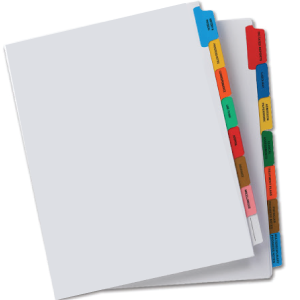
Talk to our friendly team. We can help with your print and finishing requirements, contact us today!
Folding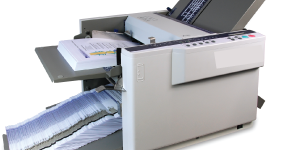
Folding follows on from creasing. A good example is the DLE brochure. This is an A4 sheet that is folded to DLE size.
Punching/Hole Drilling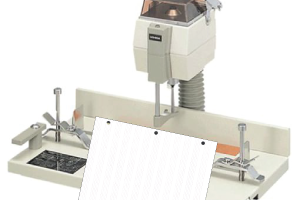
Punching is required when pages are going to be bound. Pages are punched then the binding method is applied. Binding methods that can be used are: plastic spiral comb binding, wire binding, and ring binding.
Perforating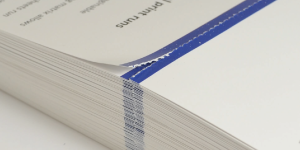
Perforating is used when a section of a page is designed to be torn off. For example, a tear off coupon at the bottom of a promotional flyer.
Creasing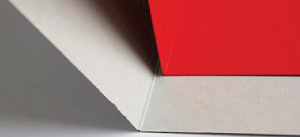
Creasing and folding really go together. Creasing of paper is used to aid the folding process. Paper that is creased prior to folding is much neater.
Die Cutting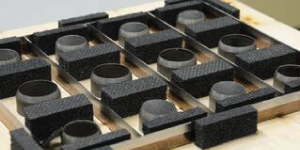
Need an alternative custom shape to impress your clients? Die-cutting gives your printed materials crisp creases and clean cuts. Great for point of sale shelf wobblers.
Call (09) 579 5575 or
email: print@copydirect.co.nz
Looking for something special to promote your brand?



Creasing

Perforating

Folding

Die Cutting

Finishing Options

Perfect Binding

Promotional Products - T-Shirts

Power Bank

Catalogues

Posters

Banners

Laminating Options

Plan Printing AO A1 A2

Black and White Printing




